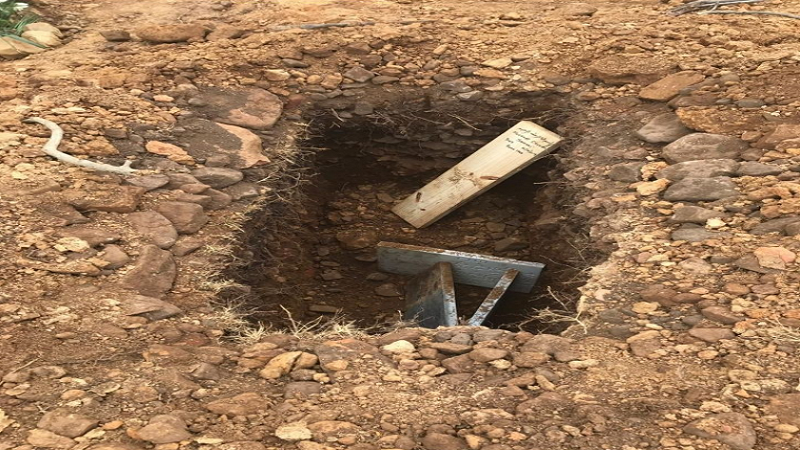The Observatory Civic Association plans to host a community-wide vigil to highlight the need for the protection of constitutional rights in South Africa. The Association has added its voice to the chorus of anger around the desecration of Mowbray maqbara, where 80 headstones were removed and placed in cult symbols last week. In its statement, which also delves into the history of the Mowbray Muslim cemetery, the association walks readers through an initial investigation done after the discovery of the desecration and calls on peaceful solidarity.
READ MORE | PHOTOS | Mowbray maqbara desecrated and marked with religious and cult-like symbols
“I met with caretaker, Mr Ismael Abrahams, who informed me that around 8:15AM the graves were found to be disturbed. Tombstones of approximately 80 graves were removed and placed across the top section of the graveyard is the position of an upside down cross. Adjacent to this are open graves that were being dug up and prepared for burial purposes by the cemetery personnel. Here in these graves, tombstones were placed in triangular shapes, further desecrating the graves,” reads the report by the chairperson, Tauriq Jenkins.
READ MORE | Violation of graves “an act of provocation”
“It would appear that the offenders scaled the back parts of the wall parallel to the road, and proceeded from there to the top of the cemetery to engage in their activity.”
Jenkins wrote that according to the caretaker, South African Police Services officers arrived at the cemetery the morning the desecration was discovered but failed to take any forensic evidence or investigate further up the incline of the cemetery to inspect the desecration fully.
READ MORE | MJC to meet Mowbray cemetery over security concerns, following desecration
The Muslim community was eventually called upon to assist in restoring the removed headstones to their rightful places due to logistical issues with floor plans at the cemetery.
Jenkins wrote that the Observatory Civic Association “condemns in no uncertain terms these unlawful and malicious acts of burial disturbance.”
“We wish to express our shared pain and support with the Islamic community, and call upon all [in] our community, including religious organisations, NGO’s, and community based organisations in the area to join our response in peaceful solidarity. The pain caused to the families resulting from these violations is unspeakable. The disturbance of the sacred remains is a disturbance not only to the graves affected, the families, the cemetery itself, but also to the spiritual well being and sense of collective cohesion we share as a diverse community of tolerance with respect for one another.”
Jenkins referred to the desecration as a crime against humanity and called on SAPS to “expedite its duty in the fullest” to bring to book the responsible individuals.
“We have requested the camera footage of all connecting interchanges to Browning [the road of the Maqbara] as well as for any other surveillance equipment in the area to be investigated. We call upon anyone with information that may assist the investigations to please contact SAPS.”
History of the cemetery
The Mowbray Muslim cemetery, or Mowbray Maqbara as it is commonly known, was traditionally known as Gamediya Cemetery and was the first Muslim cemetery bought by Muslims as a communal private burial ground in Cape Town, according to Jenkins.
The report states that the first burial at the Mowbray Maqbara took place in 1886 and has, since then, been the burial site of prominent Islamic leaders, scholars and activists. These include Judge Essa Moosa, Dr Abdullah Abrahams and Imam Abdullah Haron to mention a few.
“We will be calling a community-wide vigil in peaceful acknowledgement of the need for the protection of our freedom and rights of thought, beliefs, and expressions without fear. The announcement will be made as soon as the arrangements have been confirmed. All are welcome to attend.”
Update on the case
Since the initial discovery of the desecration at the burial ground, the University Estate and Walmer Estate neighbourhood watch groups discovered a stash of items – including flowers, headstones and vases – in what they thought to be the hiding spot of the perpetrators on the mountain slopes of Devils Peak. However, their claim that the discovery is directly linked to the Mowbray desecration is contested.
VOC






 WhatsApp us
WhatsApp us 

